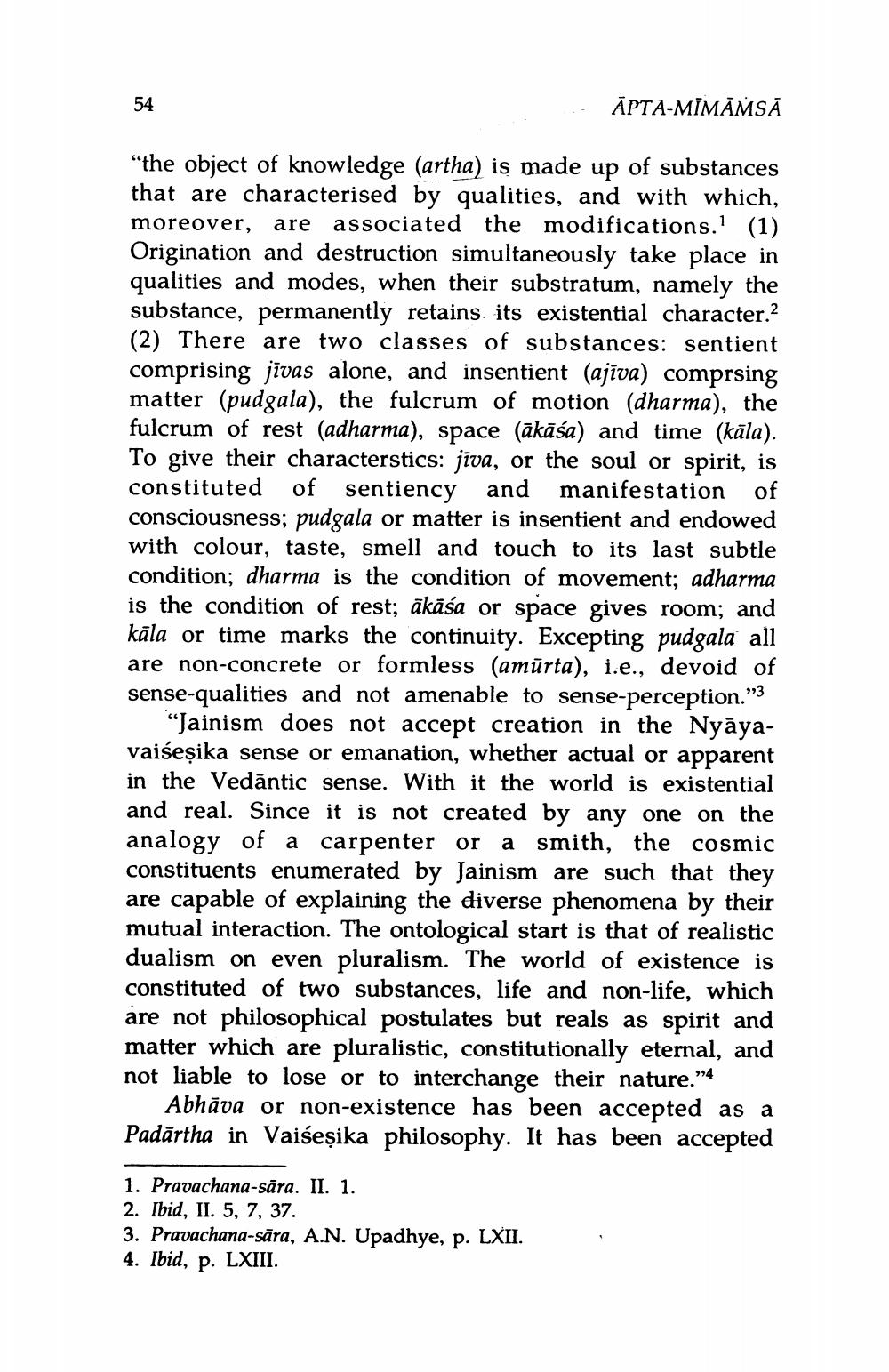________________
ĀPTA-MĪMĀMSĀ
“the object of knowledge (artha) is made up of substances that are characterised by qualities, and with which, moreover, are associated the modifications. (1) Origination and destruction simultaneously take place in qualities and modes, when their substratum, namely the substance, permanently retains, its existential character.? (2) There are two classes of substances: sentient comprising jīvas alone, and insentient (ajīva) comprsing matter (pudgala), the fulcrum of motion (dharma), the fulcrum of rest (adharma), space (ākāśa) and time (kāla). To give their characterstics: jīva, or the soul or spirit, is constituted of sentiency and manifestation of consciousness; pudgala or matter is insentient and endowed with colour, taste, smell and touch to its last subtle condition; dharma is the condition of movement; adharma is the condition of rest; ākāśa or space gives room; and kāla or time marks the continuity. Excepting pudgala all are non-concrete or formless (amūrta), i.e., devoid of sense-qualities and not amenable to sense-perception."3
“Jainism does not accept creation in the Nyāyavaiseșika sense or emanation, whether actual or apparent in the Vedāntic sense. With it the world is existential and real. Since it is not created by any one on the analogy of a carpenter or a smith, the cosmic constituents enumerated by Jainism are such that they are capable of explaining the diverse phenomena by their mutual interaction. The ontological start is that of realistic dualism on even pluralism. The world of existence is constituted of two substances, life and non-life, which are not philosophical postulates but reals as spirit and matter which are pluralistic, constitutionally eternal, and not liable to lose or to interchange their nature.4
Abhāva or non-existence has been accepted as a Padārtha in Vaiseșika philosophy. It has been accepted
1. Pravachana-sära. II. 1. 2. Ibid, II. 5, 7, 37. 3. Pravachana-sāra, A.N. Upadhye, p. LXII. 4. Ibid, p. LXIII.




